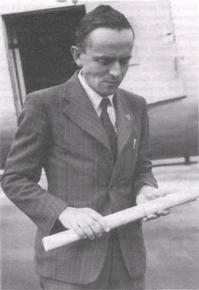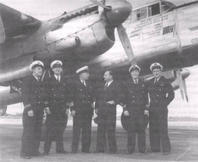


Memories of the Bureau, 1946 to 1962
Foreword
Terminology
Prologue
Preface
Chapter 1: The Warren Years, 1946 to 1950
Warren the Man
Warren Joins the Bureau
Wartime Perceptions and Attitudes
Return to Civvy Street
Frosterley
People in the Bureau
Re-establishing and Reorganising the Bureau
Reorganisation of Central Office
The Position of Chief Scientific Officer
Post-War Reorganisation
The Haldane Story
Public Weather Services
The New South Wales Divisional Office
The Victorian Divisional Office
The Queensland Divisional Office
The South Australian Divisional Office
The Western Australian Divisional Office
The Tasmanian Divisional Office
Pre-war Services for Civil Aviation
Post-War Meteorological Service for Aviation
Indian Ocean Survey Flight
The Aviation Field Staff
Synoptic Analysis, Prognosis and Forecasting
Antarctic and Southern Ocean Meteorology
A Wider Scientific Horizon
Research, Development and Special Investigations
Analysts' Conference, April 1950
Instruments and Observations
Radiosondes
Radar Winds and Radar Weather Watch
Telecommunications
Climate and Statistics
Training
Publications
CSIRO
The Universities
Achievements of the Warren Years
Chapter 2: International Meteorology
Chapter 3: The Timcke Years, 1950 to 1955
Chapter 4: A Year at the Massachusetts Institute of Technology
Chapter 5: The Dwyer Years, 1955 to 1962
Chapter 6: A Springboard for the Future
Appendix 1: References
Appendix 2: Reports, Papers, Manuscripts
Appendix 3: Milestones
Appendix 4: Acknowledgements
Appendix 5: Summary by H. N. Warren of the Operation of the Meteorological Section of Allied Air Headquarters, Brisbane, 1942–45
Endnotes
Index
Search
Help
Contact us

Indian Ocean Survey Flight
Although progress was being made in introducing modern civil aircraft into international and domestic services, it was a Lancastrian which was used for a survey flight by Qantas across the Indian Ocean from Perth to Johannesburg, South Africa, via Cocos Island and Mauritius, to assess the possibility of establishing a commercial service on that route. This was a particularly adventurous exercise from the navigational and meteorological point of view.The Lancastrian was an expedient pending availability of modern passenger aircraft. It was not commercially viable because it could carry no more than 10 passengers. Its use for the survey flight in November 1948 was partly because Qantas' Constellation aircraft were fully occupied with regular passenger flights. Also Qantas crews had considerable experience in operating the Lancastrian on the Australia-England route, and the aircraft was well suited for a survey flight.
'Doc' Hogan (1912–1978) had considerable experience in developing and operating meteorological services for the Perth-Colombo flights during and after the war and he was responsible for the operation of the meteorological section in Perth which provided forecasts for the flight. The Perth-Cocos Island leg had some observations on which to base a forecast but the Cocos-Mauritius leg had few if any except those at the departure and landing points. It was decided that it would be advantageous for an experienced meteorologist to be part of the crew. Gerry O'Mahony was a logical choice in the light of his adventurous nature, his ability to inspire confidence in aircrew and his then recent reconnaissance flight with the RAAF over the Southern Ocean on 11 March 1947 described later.

Gerry, then an aviation forecaster located at Pearce aerodrome near Perth, was completing a science degree in his spare time.
The comprehensive reports by Gerry on meteorological aspects and J. Cowan, the navigator, (of which Gerry has kindly made copies available) make interesting reading.
The survey flight was under the command of Captain Lou Ambrose, an experienced Qantas pilot, and flew the Sydney-Perth sector in the early hours of 15 November. After a briefing by 'Doc' Hogan the aircraft flew Perth-Cocos Island on 17 November in a little over eight hours, meteorological observations at Cocos being provided by a local medico. The Cocos-Mauritius sector of about 2700 miles was flown at night to enable astro navigation. The Mauritius-Johannesburg leg was flown in daylight on 20 November with the flight time from Perth totalling 30 hours.

Gerry's report of the flight appeared in the Bureau's Weather Development and Research Bulletin (WDRB).
People in Bright Sparcs - Hogan, John (Doc); O'Mahony, Gerard (Gerry); Warren, Herbert Norman
 |
Bureau of Meteorology |  |
© Online Edition Australian Science and Technology Heritage Centre and Bureau of Meteorology 2001
Published by Australian Science and Technology Heritage Centre, using the Web Academic Resource Publisher
http://www.austehc.unimelb.edu.au/fam/0898.html